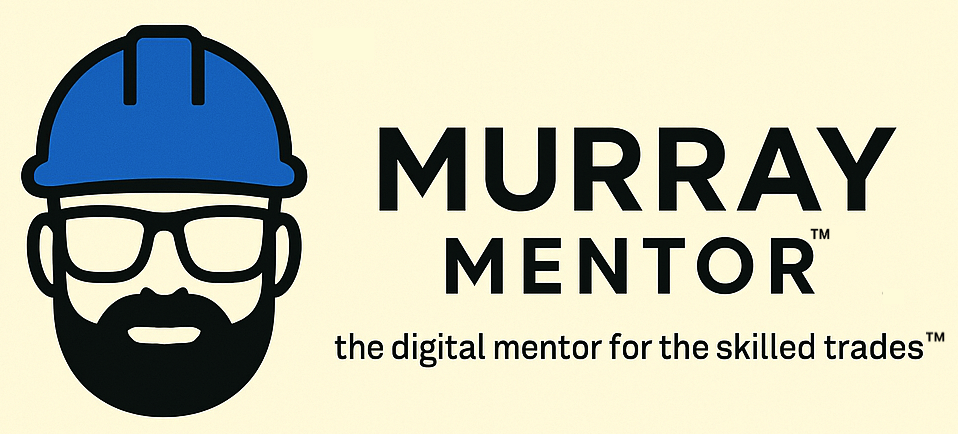Every Frontline Worker Deserves a Mentor — And Now They Can Have One
November 5, 2025
Recently featured on the Connected Workers Podcast, Murray Mentor COO, Susan Carlock, shared insights with the broader manufacturing community that struck a chord with every operations leader facing workforce gaps, retiring experts, and rising production complexity.
In the episode, she highlighted a truth many manufacturers feel daily but rarely articulate:
modern plants don’t just have a labor shortage — they have a knowledge shortage.
And the people who hold that knowledge are walking out the door faster than companies can replace them.
Yet the way Susan describes the heart of the problem is something most leaders haven’t heard framed this clearly before.
The Knowledge Problem No One Wants to Talk About
Manufacturing runs on tacit knowledge — the kind of know-how that’s caught, not taught. It’s the nuance learned over 20 decades on the floor:
the sound a press makes right before a failure,
the trick to clearing an obscure ERP error,
the workaround that saves 30 minutes on a changeover.
All of these examples reflect what seasoned operators call the knack behind how work really gets done. It’s the pattern recognition, intuition, and hands-on wisdom that rarely gets documented — but drives the majority of real-world problem-solving on the floor.
But unlike healthcare, which has a unified ontology, manufacturing doesn't share a common language. As Susan pointed out, “One plant calls it waste, another calls it scrap, another calls it co-product.” Without a standardized vocabulary, capturing and sharing knowledge becomes exponentially harder.
And it’s costing manufacturers more than they realize.
One of Susan’s most compelling examples was painfully simple:
Her team discovered over $200,000 lost in a single year due to operator-entered ERP mistakes — not because workers were careless, but because the expert knowledge behind “how we really do things here” wasn’t documented, shared, or easily accessible.
Multiply that across every procedure, machine, shift, and new hire. The impact on throughput, downtime, and quality becomes enormous.
The Human Reality: Asking for Help Isn’t Easy
Even the most capable operators hesitate to ask the same question three or four times. Not because they don’t want to learn — but because they don’t want to slow the team down or appear inexperienced.
That hesitation is where costly errors creep in.
It’s also where tribal knowledge quietly disappears — a problem rooted in the very difference between tacit vs. explicit knowledge. When that unwritten know-how doesn’t get captured, it vanishes with the person who carried it.
The Solution: An Always-Available Expert, Trained by Your Real Experts
This is where Murray comes in — and where Susan’s podcast explanation offered a refreshingly human perspective.
She compared Murray to “the inquisitive grandkid working alongside an expert — asking how, why, when, and capturing the real way work gets done.”
That conversational training style matters. It’s the only way to extract what manuals never capture and SOPs can’t keep up with.
How Murray Mentor works, in practice:
Experts talk to Murray the way they’d talk to a colleague on the floor.
Murray learns everything — from formal SOPs to tacit tricks, legacy knowledge, and problem-solving intuition.
Expert-approved workflows act as guardrails, ensuring accuracy and change control.
Novices get on-demand guidance without embarrassment or delays.
Plants build a living, continuously updated knowledge system that grows with their people.
This isn’t documentation. It’s dynamic knowledge transfer.
Real Outcomes: More Confidence, Less Downtime, Faster Ramp-Up
Several insights Susan shared stood out as truly new for the broader manufacturing audience.
1. Downtime drops simply because people share knowledge while training Murray.
Some early customers saw fewer stoppages within weeks — not because systems changed, but because people were suddenly talking, aligning terminology, and revealing inconsistencies across shifts.
2. Apprentices can now solve 80% of recurring issues — without pulling senior engineers off major projects.
One controls engineering team reported that Murray now handles the common “babysitting problems,” freeing the lead engineer to focus on automation and capital work instead of constant interruptions.
3. Plants are capturing knowledge during major projects, not after.
A customer is recording every kickoff, design review, and production test so future teams inherit the full brain history of the experts who built the line.
4. Murray exposes documentation blind spots leaders didn’t know existed.
One OEM thought an entire production line didn’t exist — until Murray uncovered hundreds of long-forgotten references in their own documents.
These aren’t edge cases. This is how real plants operate every day. And it’s why leaders who once saw the workforce shortage as a hiring problem now see it as a knowledge problem.
The Bottom Line for Operations Leaders
If you’ve ever wished your new hires could skip the 12–18 month learning curve, or that your best troubleshooters could somehow “scale,” Susan’s elevator pitch captures it perfectly:
“Imagine having an in-your-ear mentor that guides novices through a process without creating downtime — increasing productivity, protecting throughput, and ultimately improving your bottom line.”
And as podcast host Andrew Chrostowski put it:
“When you get to the bottom line, that’s it. It’s really about people, systems, and discipline — and Murray helps with all three.”
Every plant has experts. Murray makes them accessible to everyone, at any moment, without slowing production or relying on memory.
Listen to the Full Conversation
Our team is grateful to Andrew Chrostowski and the Connected Workers Podcast for the opportunity to share Murray’s vision with the manufacturing community.
You can listen to the full episode here:
Apple: https://podcasts.apple.com/us/podcast/the-connected-workers/id1793359650?i=1000735341311
Spotify: https://open.spotify.com/episode/0RuR23cnCXbsERGwqDMXUH?si=i8F2l66TSdKJUMDZub0DGg
This conversation barely scratches the surface — the episode dives deeper into ontology gaps, training failures, real customer stories, and what the next generation of manufacturing mentorship looks like.
